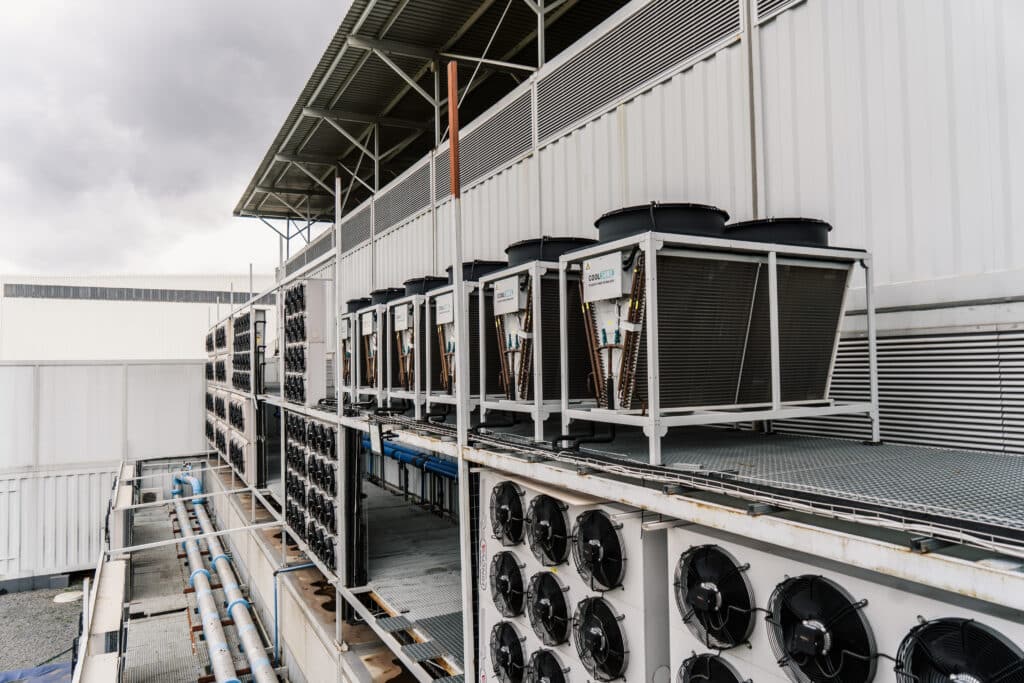
In South Africa, many conversations about data centre resilience have tended to centre on power, but today, backup power is a given – no credible DC provider operates without it. The real differentiator lies elsewhere, in the efficiency and precision of the data centre’s design & operations. Managing airflow, controlling humidity, building the most effective and efficient cooling systems, and planning the physical layout are all essential. When these factors are overlooked, the consequences are serious: degraded hardware performance, increased energy consumption, higher operating costs, and potential downtime that disrupts business, resulting in revenue loss and reputational damage. Designing a world class data centre goes beyond simply keeping servers on during load shedding; it is about ensuring they run efficiently, reliably, and within the precise environmental conditions they were built and designed for.
A sensitive ecosystem a high cost of failure
According to Warren Schooling, Sales Manager at Digital Parks Africa, many businesses underestimate the impact that temperature and airflow have on performance, efficiency, and cost. “Everyone always asks about the power supply to the facility, but hardly anyone asks about cooling, a vitally important metric. Without proper thermal management and thoughtful data centre design, your equipment’s performance will suffer, and ultimately, the customer ends up paying more for lower reliability and reduced efficiency.”
Heat is a significant corrosive force in a data centre. It places undue stress on sensitive components like hard drives, Solid-State Drives (SSDs) and Random-Access Memory (RAM). Furthermore CPU’s are especially vulnerable to excessive temperatures, which accelerate wear and tear and reduce their operational lifespan. This not only increases the risk of system crashes, data corruption, and even irreversible loss, it also often voids any hardware warranties that are in place. For businesses relying on always-on access to services such as web hosting providers, the knock-on effect can be severe.
“Uptime isn’t just about power, it’s about the quality of the facility, the air, the dust, and the heat. Heat is a bigger risk than people realise,” says Jade Benson, Managing Director at Absolute Hosting. “You can have all the backup power and solar systems you need, but if three out of four HVAC systems fail, you and your business are in serious trouble. We have experienced switches and systems failing from overheating, a challenge we experienced first-hand with a previous provider which forced us to shut things down to prevent catastrophic loss and damages. This issue underscored just how important it is to have a data centre provider that prioritises maintaining optimal thermal conditions.”
Cooling done wrong can cost you everything
Too often, data centres are built to minimise upfront costs rather than optimise long-term performance. Proper airflow management, humidity control and environmental monitoring are essential, and if a data centre operator is being reactive instead of proactive, it should be a red flag.
Inadequate cooling infrastructure is not just a technical oversight, it becomes a business problem. “Servers are engineered to operate in a specific temperature range. If you run them hot, performance suffers, warranties can be voided, and the risk of failure increases. Meanwhile, your operational costs go up because hot machines draw more power. It’s a vicious cycle,” says Schooling.
Data centre design – especially your cooling strategy – must be climate appropriate. It can’t be a one-size-fits-all. “In Johannesburg’s dry air, evaporative cooling works well, but in humid coastal conditions, a different approach is needed. That’s why a dual topology design is optimal, for example, using evaporation cooling supported by DX units that can supplement or take over when required. Smart HVAC systems, 2N redundancy, and airflow containment help ensure to maintain optimal conditions in any environment,” says Schooling.
“Automation plays a role, but it is not a silver bullet. Sensors can fail. You need human oversight, live monitoring, and clear mitigation plans. The data centre environment is a fragile environment and demands surgical precision,” he adds.
Reputation and customer trust at stake
The effects of underperforming thermal design are tangible for businesses like Absolute Hosting that rely on constant uptime and high performance. “When servers overheat, performance drops. We pay a premium for high-quality hardware, and if it is not running at optimal levels, the service we deliver to our customers suffer. The risk is not just data loss. Once you lose a customer due to downtime or poor performance, it is incredibly difficult and costly to win them back,” says Benson.
With artificial intelligence and high-performance computing becoming increasingly standard, thermal loads in data centres are only set to rise. GPU’s, in particular, generate significant heat, and without properly engineered cooling and heat extraction systems, the consequences can include critical hardware failure, prolonged downtime, and severe disruption to core business operations.
The bottom line
“As the stakes rise for uptime and performance, data centre cooling must be viewed as a core business issue. What happens inside a data centre directly affects the reliability, speed, and cost of the services which businesses rely on every day. As equipment gets more powerful and heat loads increase, it’s no longer enough to ask if there is backup power. Companies need to understand how their infrastructure is built, how it is maintained, and whether it is truly designed to handle demand, because by the time something fails, it is already too late.” – says Benson.
